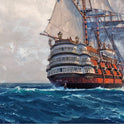Quinarii: from the empire to the empire
There are quinarii, quinarii, and quinarii...
There is a bamboozling pecuniary link between the Roman Empire celebrating its victories with memorable congiaries and the Napoleonic Empire celebrating its coronation: the quinarii distributed with great flair and generosity to the masses.
In the absence of a quinquennium, we are thus provided with a triumvirate: quinarii of the Roman Republic, quinarii of the Roman Empire, and... (more or less) modern quinarii.
Quine!
(I’m very sorry – my keyboard is getting carried away now)
While the emperors of antiquity had coins minted, more recent kings and emperors were inspired to mint medals, medallions, and other tokens, appropriately named quinarii for the occasion...
When it comes to distributing coins, antique is chic...your Imperial Highness!
I – Silver quinarius
As far as Roman antiquity is concerned, the quinarius (quinarius nummus) was a coin created under the Republic, in the course of the 3rd century BC, while the Second Punic War was raging and Hannibal, in a very bellicose mood, was boasting along the borders on the back of an elephant.
Munten Anoniem
Quinarius, 211-210 BC, South East Italy, Rare, PR, Zilver
This quinarius is made of silver and was worth half a denarius, but also 5 bronze asses.
It is easily recognizable thanks to the Roman numeral V on the obverse next to the helmeted head of Rome.
Around 145 BC, things got more complicated, the type was changed, and the sense (all 5 of them) was lost.
The silver quinarius was then worth 8 asses.
It continued to be issued under the Empire and continued to circulate until the elephants came home (just joking). Well, it remained in circulation and was sometimes distributed to the people on the occasion of imperial congiaries (congiarium).
II – Gold quinarius
In 19 BC, thus still in Ancient Rome – let’s not put the cart before the horse on the Appian Way, please, it’ll get blocked – Augustus imperially put his golden touch on all this and created the gold quinarius (quinarius aureus), which was worth 200 asses.
Tiberius Quinarius
15-16, Lyon - Lugdunum, Very rare, Goud, ZF, RIC:5
This half-aureus weighing almost 4 grams is by no means small change and is very rare these days.
III – Modern quinarius
One might lose their mind, but never their money. No, we are talking about medals and tokens proudly inspired by their ancient and very distant ancestor. Tribute paid, weight of years, classic inspiration...
Empire? Empire!
The modern era strikes a pose and coins.
The people want more, kings and emperors are inspired, the people are amazed.
Frankrijk Token
Napoléon, Quinaire, Sacre de l'Empereur, 1805, ZF, Zilver
Napoleon I distributed them by the handful on the occasion of his coronation: silver, a majestic obverse, and chiseled dots – the Roman ancestry is clearly evident. He also repeated the feat a few years later on the occasion of his marriage to Marie Louise in 1810!
Frankrijk Medaille
Mariage de Napoléon et Marie-Louise, Quinaire, 1810
Frankrijk Medaille
Louis XVIII, Quinaire, Henri IV, History, UNC-, Zilver
However, he was not the only one: there were certainly many successors and rare predecessors with the same inspiration.
Iconography
- "Virgil Reading the "Aeneid" to Augustus, Octavia, and Livia" by Jean-Baptiste Wicar (1790) (CC0)
Sources






















